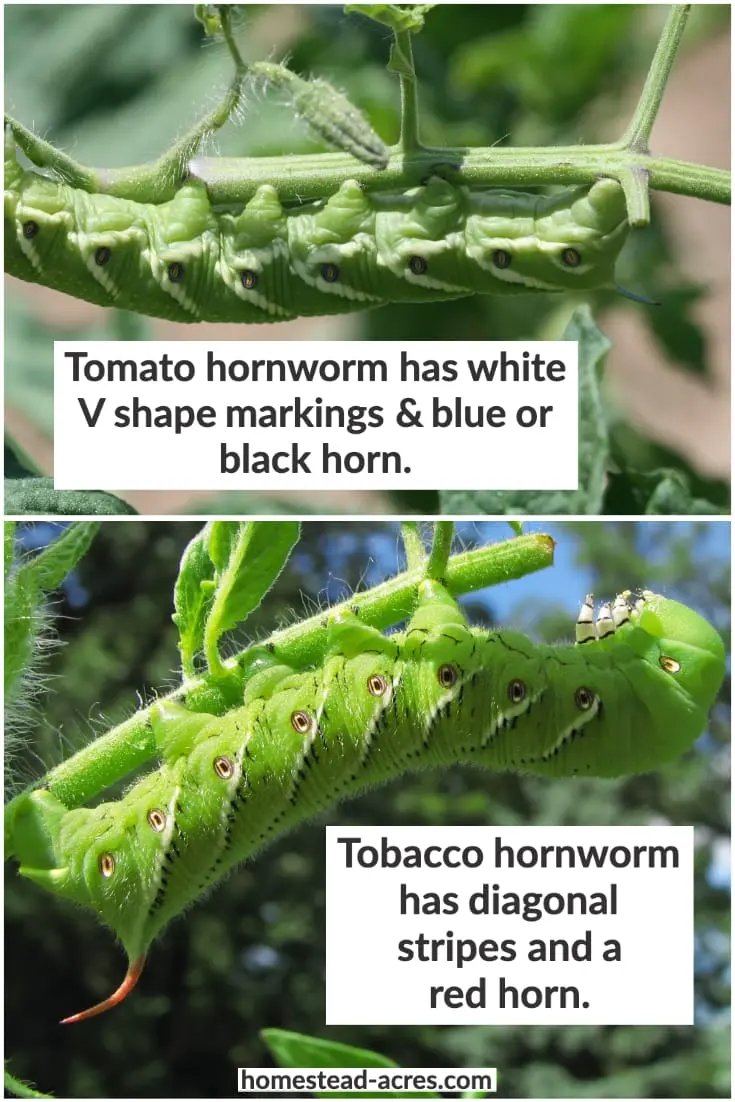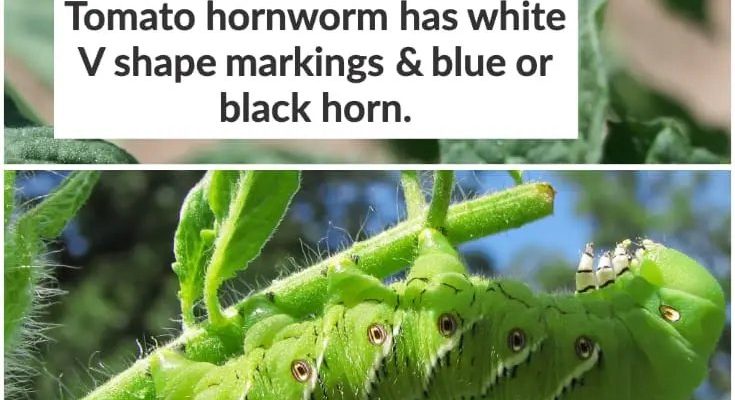
Let me paint a picture for you: imagine you’re in your garden, enjoying the fresh air and sunshine, when you notice your beloved tomato plants looking a bit worse for wear. You bend down and catch a glimpse of a hefty green critter. Is it a Tobacco hornworm sneaking a snack, or is it a Tomato hornworm doing the same? Understanding the key differences can help you decide how to tackle these pests and protect your garden.
Appearance: Spotting the Differences
When it comes to identifying Tobacco and Tomato hornworms, their appearances are your first clue. Both are large, green caterpillars that can grow up to 4 inches long, but you’ll find some noticeable differences.
Tobacco hornworms typically have a distinctive hook-shaped horn on their rear end, which gives them a unique profile. They also sport diagonal white stripes along their sides. On the other hand, Tomato hornworms have a similar hook but with a more prominent V-shaped mark on each side. Recognizing these features is crucial because once you know what you’re dealing with, you can choose the right approach to control them.
In terms of coloration, while both might look generally green, the Tomato hornworm can sometimes have a more subdued color, almost blending in with the foliage. To catch them in action, think of them like ninja warriors—hard to spot until you look closely!
Feeding Habits: What They Eat
Now that you’ve got a grip on their appearances, let’s dig into their diets. Both hornworm types are voracious munchers, but they have distinct tastes, which can help you in the garden.
Tobacco hornworms prefer plants in the nightshade family, particularly tobacco plants and, surprisingly, tomatoes. This can lead to significant damage, especially if you have a tobacco crop nearby. On the flip side, Tomato hornworms, as the name suggests, primarily feast on tomato plants but will also enjoy peppers and eggplants.
So, if you notice the same type of damage on different plants, the type of hornworm can give you clues on how to adjust your approach. For instance, if your tomatoes are suffering and you see Tobacco hornworms, it might be time to check your tobacco plants too.
Life Cycle: Understanding Their Growth
Understanding the life cycle of these hornworms can help you know when to expect them and how to manage them effectively. Both Tobacco and Tomato hornworms undergo similar stages: from egg to caterpillar (or hornworm) to pupa and finally to moth.
The female moth lays her eggs on the host plant, typically in clusters. Once these eggs hatch, the tiny caterpillars begin their feeding frenzy. Interestingly, the Tobacco hornworm can hatch from eggs laid by the Tobacco sphinx moth, while Tomato hornworms come from the notorious Five-spotted sphinx moth.
Knowing this can help you anticipate when these critters will show up in your garden. If you spot the moths fluttering around in late spring or summer, keep an eye out for their eggs!
Dangers to Your Plants: How They Cause Damage
Both hornworms can wreak havoc on your garden, but the extent of the damage can vary. Tobacco hornworms tend to be more destructive because they feed in clusters, consuming large quantities of foliage rapidly. This can lead to weak plants that struggle to thrive.
Tomato hornworms, while also damaging, might not cause as much immediate destruction. However, their appetite can lead to substantial losses if not controlled in time. They can strip leaves and even chew through stems, which can reduce the plant’s ability to produce fruit.
To be proactive, regularly check your plants and look for telltale signs of damage, like missing leaves or frass (a fancy term for caterpillar poop). Catching them early is key to keeping your garden healthy.
Control Methods: How to Manage Them
Getting rid of hornworms can be a challenge, but knowing which type you’re dealing with can help you select the right control method. For both Tobacco and Tomato hornworms, organic solutions can be very effective.
One popular method is to introduce beneficial insects, like parasitic wasps, which lay eggs in or on the hornworms, effectively controlling their population. Additionally, you can use organic pesticides that target caterpillars, avoiding harm to beneficial insects.
Handpicking them off your plants is another straightforward approach—just make sure to wear gloves! When you see one, pick it off and dispose of it properly. It’s a bit of a “caterpillar scavenger hunt,” but it can be gratifying, and your plants will thank you.
Common Myths: What You Might Have Heard
There are many misconceptions floating around about hornworms, and it’s time to set the record straight. One common myth is that these caterpillars only attack tomatoes and tobacco. While they do favor these plants, they can also target other members of the nightshade family, such as peppers and eggplants.
Another myth is that all hornworms can cause irreversible damage to your plants. While they can indeed cause significant stress and damage, plants are often resilient. With the right care and management, many plants can recover even after hornworm infestations.
It’s essential to approach the situation with a level head and not rush into drastic actions. Sometimes a little patience and observation can go a long way.
Knowing the differences between Tobacco and Tomato hornworms can equip you with the tools to protect your beloved garden. From identifying these chunky caterpillars to understanding how they affect your plants, awareness is your best defense.
Whether it’s through organic pest control or simple handpicking, staying proactive is essential. Keep your eyes peeled for these munching menaces, and don’t let them ruin your gardening joy. After all, a little knowledge can go a long way in preserving the beauty of your garden and ensuring a bountiful harvest!

